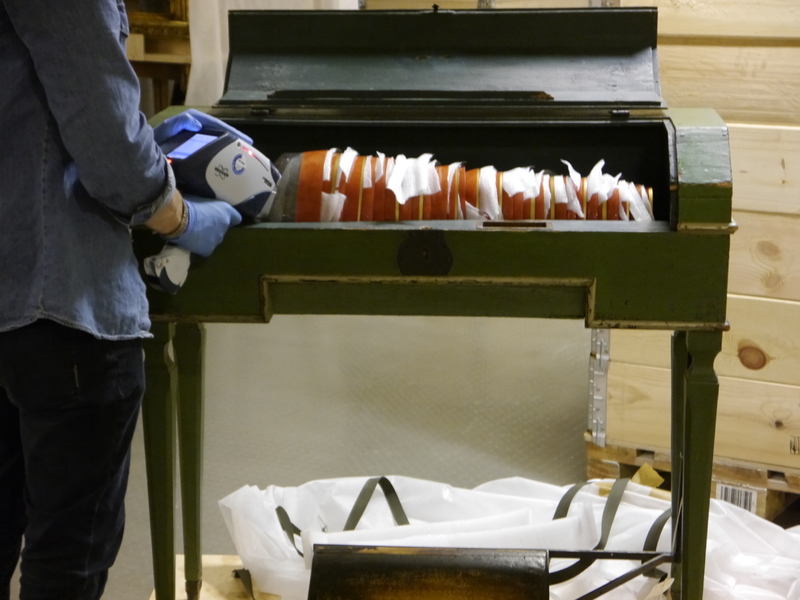Findings from non-destructive material analysis on musical glass instruments
Charlotte Holzer
Introduction
The conservation science lab of the Deutsches Museum tested two qualitative methods of non-destructive examinations, ultraviolet (UV) light fluorescence and X-ray fluorescence (XRF) analysis, to characterize the type of glass used in six musical instruments from the collection. The aim was to determine how much information on the glass composition could be gained. This knowledge can contribute to an understanding of the glass manufacturing context and possible susceptibility of the material to humidity (chemically instable glasses) and UV-light (manganese-rich glasses).
You can jump directly to the results of the individual instruments or start by reading more on the analytical methods. At the end of the exhibition, you will find an overview of all results, followed by a comparative data interpretation and the literature used during the study.
Citation: Charlotte Holzer, ‘Findings from Non-destructive Material Analysis on Musical Glass Instruments’, in: Materiality of Musical Instruments. A Virtual Exhibition.

